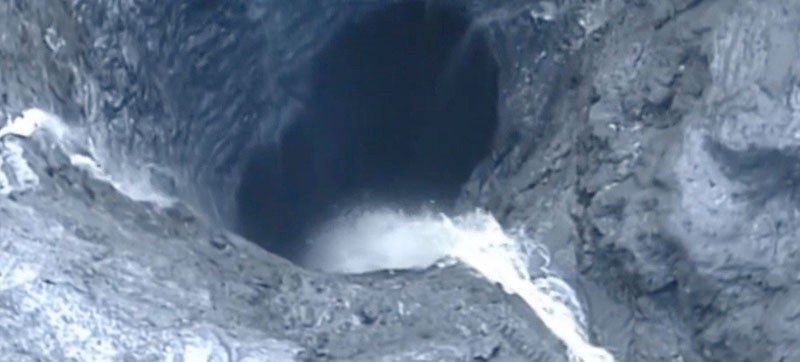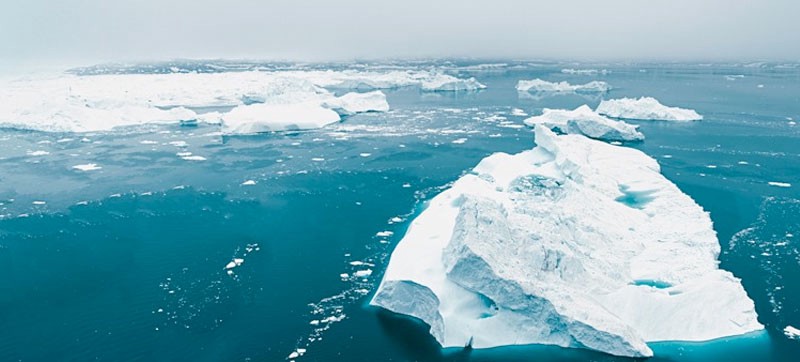Underland and Underwater
How often do we think about what lies below the surface of the land, below the sea floor? This week we're thinking about water and our reckless consumption of it for agriculture, industry, and what we consume for both our basic needs and for our survival. How long before we exhaust the supply? How long before a rapidly changing environment demands a response?
A world below surface, what does that look like? More and more it would seem that reality is less than skin-deep, often virtual, photo-shopped, shaped as illusive aspirations, as insubstantial and unrewarding gloss, and indifference to the harsh authenticity and deep meaning that exists below grade, under land, and under water.
How often do we think about what lies below? In some cities, there are underground systems of transportation, connection, and services that enable living without the sight of day. We hurtle through bedrock toward a place of work; we consume the energy extracted from deep within the earth; we hide our waste in forgotten shafts and pits.

Geology no longer fascinates other than those who explore the earth below for oil and gas, gold, diamonds uranium, rare earths, and other fossilized fuels and buried resources to energize and sustain our consumptive way of life. How long before we exhaust the supply? How long before the life sustained through the earth's inside is also rendered extinct?
The last value under is water - the most essential resource required by us all to survive no matter what. Think not just about the surface water that drops from the atmosphere in ever-increasing strength and frequency and that floods and erodes and spreads all the organic and in-organic stuff that we deposit in our expanding cycle of waste, but think also of the aquifer, all that hidden water deep in the center of the earth in caves and caverns and seams and veins in the stone, that invisible water that, because the geologists and engineers tell us it is there, we tap and pump and poison with more stuff until it all drains back into the ocean.
I recently visited southern Greenland and stood in a boat face-to-face with a massive glacial finger extending from the central ice cap to the fjord. As Greenland, like many other places around the world, was experiencing record heat, the already existing warming trends were accelerating in visible real time, with the edge calving in big chunks of dirty ice joining all the other iceberg bits already there. The most telling phenomenon, however, was the opening of a giant river of melt water, releasing millions of gallons dissolved from the ice cap and descending with a torrential roar as if a enormous dam had burst upstream and released untold volumes into a madcap rush to the sea. The sound, and the generated wind, the conflict of wave and water and ice - all mixed and too loud enough as if to shout: pay attention, something powerfully unique is evident here, and you had best accept, understand, and move to higher ground.

It seems far too easy to dismiss or deny climate change as a statistical anomaly or an anecdotal exception. But if you look below you begin to understand that all that underground water, all that precious surface water, is being lost to our use, our food supply, our health, and our survival. Consider this one stunning statistic: in 2015, the United States alone consumed 322 billions gallons of water per day, and of that most was wasted. Consider also that there are major cities today that cannot provide even basic sanitation treatment and drinking water to populations of millions. Consider that we are doing nothing to capture and re-capture water for re-use, nothing to change our industrial and agricultural demand for unlimited water, nothing to extract the additional energy inherent in this hydraulic movement, nothing to limit the price of consumption in terms of real cost, externalities, and critically diminished supply, nothing to understand the drought, the fire, and resultant conflict, nothing to address the declaration, at the face of the glacier, of impending collapse. What will it take?
The most evocative symbolic river is, of course, the River Styx, that biblical boundary water where sinners cross over into damnation. At the face of the Greenland glacier, I was surrounded by antithesis - white, light, clarity and beauty, an evocation more of a Heaven than a Hell - but it was all paradox, an incongruous demonstration of the emptying of the earth, inside out, upside down, and an unequivocal challenge to respond - and soon - with answers.

PETER NEILL is founder and director of the W2O and is author of The Once and Future Ocean: Notes Toward a New Hydraulic Society. He is also the host of World Ocean Radio upon which this blog is inspired.
- Login to post comments
-


